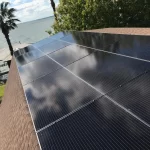Are you considering installing solar panels on your rooftop, but wondering how much electricity they can actually generate? In this article, we will break down the factors that determine solar panel output and give you a clear understanding of how much electricity you can expect to produce.

Check out the Estimated Solar Cost of your home INSTANTLY!
Its 100% FREE
You can have a quick idea about the cost of switching to solar
Our Energy professionals are one call away for advice
Important Points To Remember:
- The output of solar panels is electrical energy in the form of direct current (DC) that is produced by your PV modules.
- The wattage of a solar panel represents its theoretical power generation capacity under ideal conditions, including abundant sunlight and optimal temperatures.
- We can categorize solar panels into two main size groups: 60-cell solar panels and 72-cell solar panels.
- As of 2022, the National Renewable Energy Laboratory (NREL) achieved a groundbreaking milestone by developing the most efficient solar cell, having approximately a 39.5 percent efficiency rate.
- Regularly cleaning your panels will help maintain their efficiency and ensure they are capturing as much sunlight as possible.
- To calculate the financial benefits of solar panel output, you’ll need to consider factors like the cost of your solar panel system, the electricity rates in your area, and any available incentives or tax credits.
What is in this article?
- What is Solar Panel Output?
- What Factors Determine the Solar Panel Output?
- How to Calculate Solar Panel Output?
- What is the Average Solar Panel Output in Different Regions?
- How Much Energy is Produced by a Solar System?
- What are the Factors that impact Solar Panel Output?
- How to maximize solar panel output?
What is Solar Panel Output?
The output of solar panels is electrical energy in the form of direct current (DC) that is produced by your PV modules. Solar panel output is often expressed in watts (W) or kilowatts (kW), and the price you pay for your solar system is typically determined by its power output.
The wattage of a solar panel represents its theoretical power generation capacity under ideal conditions, including abundant sunlight and optimal temperatures. This wattage is calculated by multiplying the voltage (volts) by the amperes (amps). The wattage indicates the electrical force and the amperes represent the total energy used.
For grid-tied systems, factors like open-circuit voltage and system voltage might not be as critical. However, for off-grid and battery storage systems, the voltage becomes a significant component of your PV system.
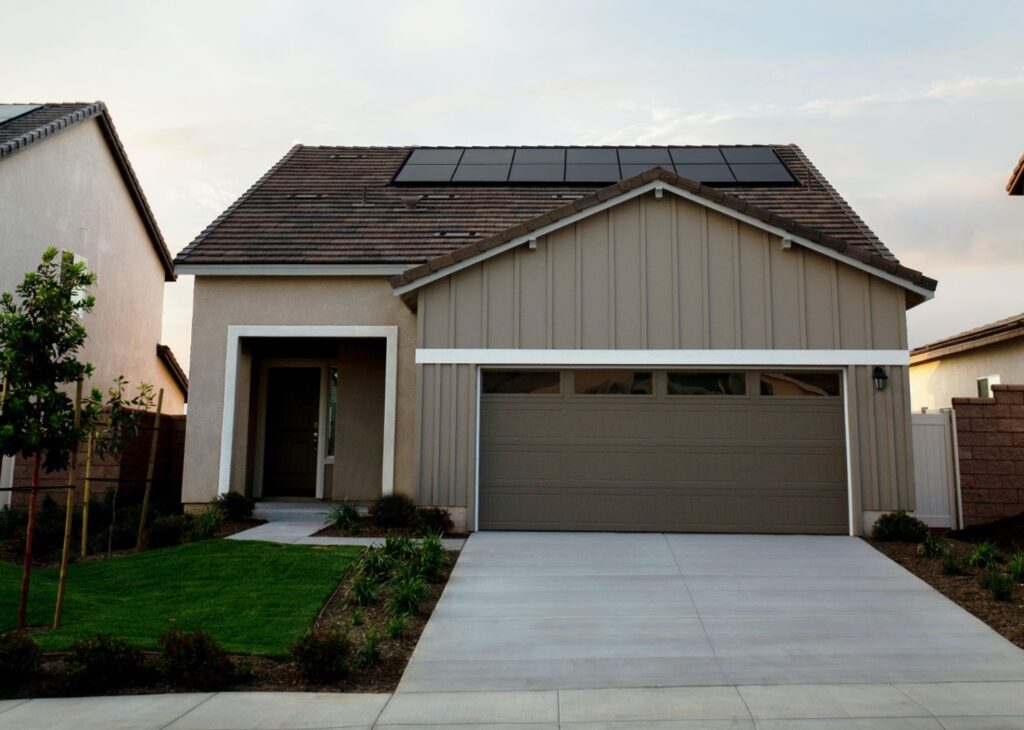
It’s important to understand that the financial benefits you derive from your solar system are directly related to the electric energy it generates over time. Simply put, the actual energy production over the system’s lifespan is what translates into savings on your electricity bills. Moreover, you also receive credits through net metering from your utility company.
What are the Factors to Determine the Solar Panel Output?
Solar Panel Efficiency:
When it comes to choosing solar panels, one of the most critical factors to consider is their efficiency. A higher efficiency rating translates to the ability to generate more power from the sunlight. Today, most silicon-based solar cells can convert approximately 18 to 22 percent of the sunlight they receive into usable solar energy. This advancement has led to solar panels exceeding 400 watts in power output. In simple terms, higher efficiency equals more energy production. Therefore, making the high-efficiency solar panels a preferred choice for generating electricity for your home.
As of 2022, the National Renewable Energy Laboratory (NREL) achieved a groundbreaking milestone by developing the most efficient solar cell, having approximately a 39.5 percent efficiency rate. You can determine the power rating of each solar panel by combining the efficiency of its individual solar cells with the panel’s physical dimensions.
Quality of Solar Panels:
The quality and efficiency of the solar panels also play a significant role in determining output. Higher-quality panels with better conversion rates will generate more electricity from the same amount of sunlight.
Monocrystalline panels, made from a single crystal structure, tend to be more efficient than polycrystalline panels, which are made from multiple silicon crystals. However, monocrystalline panels are also more expensive. Thin-film solar panels are the least efficient but are more flexible than monocrystalline and polycrystalline modules.
It’s important to note that solar panel efficiency can also be affected by temperature. Solar panels operate more efficiently in cooler temperatures, so excessive heat can reduce their output. However, modern solar panels can handle temperature variations and still maintain a high level of performance.
Number and Size of Panels:
 We can categorize solar panels into two main size groups: 60-cell solar panels and 72-cell solar panels. The 60-cell panels typically measure around 5.4 feet in height and 3.25 feet in width. The output capacity of these panels ranges from approximately 270 to 300 watts. In contrast, 72-cell solar panels are larger because they include an extra row of solar cells. This can result in an average power output of about 350 to 400 watts. While they share a similar width with 60-cell panels, 72-cell panels are notably taller, standing at an average height of 6.5 feet. It’s worth noting that 72-cell panels are typically installed in commercial buildings and large scale solar projects, rather than being a common choice for residential homes.
We can categorize solar panels into two main size groups: 60-cell solar panels and 72-cell solar panels. The 60-cell panels typically measure around 5.4 feet in height and 3.25 feet in width. The output capacity of these panels ranges from approximately 270 to 300 watts. In contrast, 72-cell solar panels are larger because they include an extra row of solar cells. This can result in an average power output of about 350 to 400 watts. While they share a similar width with 60-cell panels, 72-cell panels are notably taller, standing at an average height of 6.5 feet. It’s worth noting that 72-cell panels are typically installed in commercial buildings and large scale solar projects, rather than being a common choice for residential homes.
How to Calculate Solar Panel Output?
To determine your solar panel’s output, follow these simple steps:
Calculate Your Solar Panel Capacity: Find out your panel’s wattage rating, usually labeled on the panel itself.
Daily Sunlight Hours: Determine the average daily sunlight hours in your location, which varies by region and season.
Use the Solar Panel Output Formula: Multiply your panel’s capacity by the daily sunlight hours and adjust for factors like temperature and shading.
Consider Energy Needs: Factor in your energy consumption to ensure the system meets your requirements.
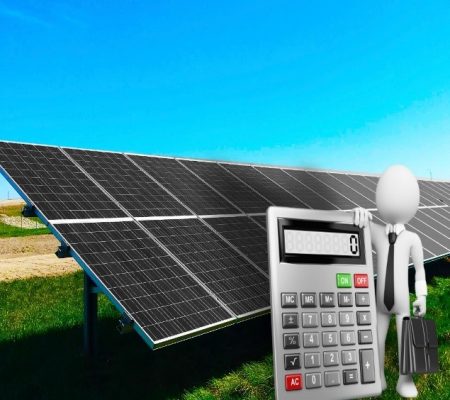

What is Average Solar Panel Output in Different Regions?
The average solar panel output can vary depending on your location. Regions with higher solar irradiance, such as the southwestern United States, will have a higher potential for solar energy production. Moreover, in these regions, a 1 kW solar panel system can produce an average of 4-5 kWh per day.
In less sunny regions, the average solar panel output will be lower. For example, in the northeastern United States, a 1 kW solar panel system can produce an average of 3-4 kWh per day. However, even in these regions, solar panels can still provide a significant portion of your electricity needs.
How Much Energy is Produced by a Solar System?
To determine the solar power generation potential of your roof, you need to consider several factors. These factors may include average daily sunlight hours and the wattage rating of the solar panels. Let’s break down the calculation:
Assuming your location receives an average of five hours of direct sunlight per day and you opt for premium solar panels with a rating of 290 watts each. If you decide to install 30 of these premium solar panels on your roof, your total solar panel system size would be 8,700 watts, which is equivalent to 8.7 kilowatts (kW).
Now, to estimate daily electricity production, you can multiply the average daily sunlight hours (5 hours) by the system’s capacity (8.7 kW). This calculation yields approximately 43.5 kilowatt-hours (kWh) of electricity generated per day.
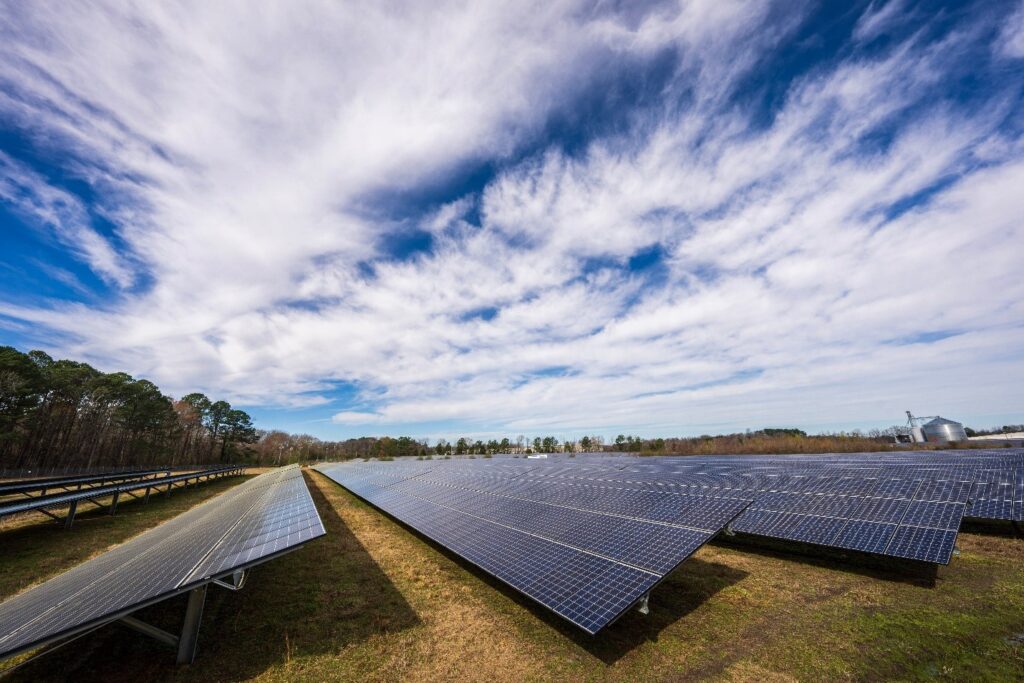
To determine the annual electricity production, you can multiply 43.5 kWh by the number of days in a year (365 days). This can result in roughly 15,800 kWh of electricity generated annually from your rooftop array of 30 premium 290W solar panels.
To put this into perspective, the average yearly electricity consumption in the United States is approximately 10,600 kWh. This means that your solar panel system, generating around 15,800 kWh per year, is likely to power your entire home with solar energy.
What are the Factors that Impact Solar Panel Output?
Several factors can influence the output of solar panels, including:
Sunlight Intensity:
The amount of sunlight your solar panels receive will greatly impact their output. Regions with more sun exposure will generally produce more electricity than areas with less sunshine. That is why solar panels are more commonly installed in sunny places like California and Arizona. However, even in less sunny regions, solar panels can still be a viable option for generating electricity.
Tilt and Orientation of Panels:
The tilt and orientation of your panels also play a significant role in determining their efficiency. Ideally, solar panels should be installed at an angle that allows them to capture the most sunlight throughout the day. The optimal tilt angle will depend on your location and the time of year, as the sun’s angle changes with the seasons. Additionally, the orientation of your panels should be towards the south in the Northern Hemisphere and towards the north in the Southern Hemisphere for maximum exposure to the sun.
Shading:
Shading caused by nearby buildings or trees can also affect the output of your solar panels. Even a little shade can significantly reduce the efficiency of your panels. This is because the shaded cells do not produce electricity. Therefore, it is essential to install your solar panels in a location that minimizes shading throughout the day.
Temperature:
Extreme heat can also impact solar panel output. High temperatures can cause the panels to operate less efficiently, resulting in a decrease in energy production. However, modern solar panels can handle temperature fluctuations and still maintain a high level of performance.
Cloud Cover:
Solar panels are designed to generate electricity even on cloudy days. However, their output can be significantly reduced in overcast conditions. Cloud cover reduces the direct sunlight reaching the panels, resulting in a decrease in energy production.
Snowfall:
Snowfall can also affect solar panel output. A layer of snow on the panels prevents sunlight from reaching the cells, reducing their efficiency. However, most solar panels are designed with a smooth surface that allows snow to slide off more easily. This can minimize the impact on energy production.
Inverter Efficiency:
Solar panels generate direct current, which needs to be converted into alternating current for most household and commercial uses. The efficiency of the inverter, which performs this conversion, can affect the overall system output.

How to Maximize Solar Panel Output?
The output of your solar panels is influenced by external factors. One of the key ways to increase solar panel output is to ensure they are clean and free from any dirt or debris. Regular cleaning of your panels will help maintain their efficiency and ensure they are capturing as much sunlight as possible.
Another way to maximize solar panel output is to invest in a solar tracking system. These systems adjust the angle and orientation of your panels throughout the day to follow the sun’s path. By constantly optimizing their position, solar tracking systems can increase the energy production of your panels by up to 25%.
Furthermore, regularly monitoring your solar panel performance can help identify any issues that may be affecting their output. Monitoring systems can provide real-time data on the energy production of your panels. This will allow you to quickly address any potential problems.
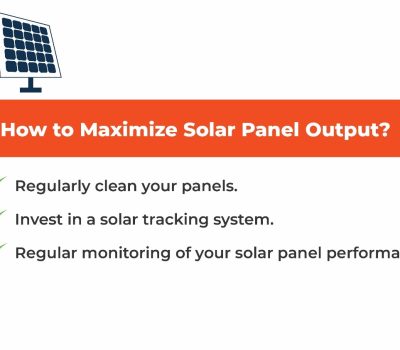
Conclusion:
Solar panels have become a popular and sustainable solution for generating electricity. Understanding the factors that affect solar panel output is crucial in determining how much electricity you can generate with solar power. By considering your location, and panel quality, and optimizing their performance, you can maximize the energy production of your solar panels.
Additionally, regularly monitoring and maintaining your panels will help ensure they are operating at their optimal efficiency. With careful planning, you can harness the full potential of solar panel output and enjoy the benefits of clean and renewable energy for years to come. So, take the leap and embrace solar energy to power your home or business while making a positive impact on the environment.



